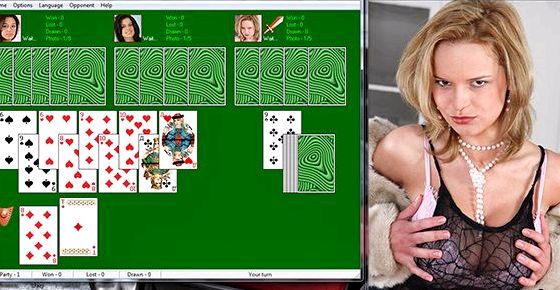Contents • • • • • • • • • • • • • • Setup [ ] The game is typically played with two to five people, using a of 36 cards, for example a from which the numerical cards 2 through 5 have been removed. The game can be played with six people if desired. In theory the limit for a game with one deck of 36 cards is six players, but this gives a considerable advantage to the player who attacks first, and a considerable disadvantage to the player who defends first.
Durak je enostavna igra, ki jo je lahko igrati perfektno (glede na karte, ki jih dobiš). Jaz sem se jo kot otrok naučil samo z gledanjem starejših. Find more about our collection of karti durak igra games. Enjoy karti durak igra games and have fun.
Variants exist that use more than one deck. The deck is shuffled, and each player is dealt six cards.
The bottom card of the stock is turned and placed face up on the table, its suit determining the trump suit for the current deal. For example, if it is the Seven of diamonds, then diamonds rank higher than all plain-suit cards. The rest of the pack is then placed on half over the turnup and at right angles to it, so that it remains visible. These cards form the prikup. The turnup remains part of the talon and is drawn as the last card.
Cards discarded due to successful defences are placed in a discard pile next to the talon. Playing [ ] The player with the lowest trump is the first attacker and leads to the first trick. The player to the attacker's left is always the defender. 
After each round of attack play proceeds clockwise. If the attack succeeds (see below), the defender loses their turn and the attack passes to the player on the defender's left. If the attack fails, the defender becomes the next attacker. First attack [ ] The is the highest card of each suit and the Six is the lowest. A trump card of any rank beats all cards in the other three suits. For example, a Six of trumps beats an Ace of any other suit. The attacker opens their turn by playing a card face up on the table as an attacking card.
The player to the attacker's left is the defender. They respond to the attack with a defending card. Defending [ ] The defender attempts to beat the attack card by playing a higher-ranking defending card from their hand. For example, if the attacker plays an 8 of Spades the defender must play a higher spade such as the 10 of Spades or a card from the trump suit to defend successfully. The defender must play a higher card of the same suit as the attack card or play a card of the trump suit. The defending cards are placed on top of the attack card overlapping it so both cards are visible and it is clear which cards are attacking and defending cards.
After the first attack, if the defender is successful, the attacker may launch a new attack. If they cannot or if they pass, then the player to the left of the defender may start a new attack or pass the chance to attack to the next non-defender going clockwise around the table. For each new attack which is defended successfully by the defender, the player who led that attack (played the last attack card) may start a new attack. After the original attack, attacks can only be made if the new attack card matches a card which has already been played during that round. If the player who led the last attack choose not to attack again (and all future attacks during the round of attacks) then the original attacker may make a new attack, if they pass on making an attack then players to the defenders left may attack or pass and so on going clockwise around the table.

There cannot be more than six attacks in each round. Each new attack card is placed to the left of the last attack card and the defender plays their defending card on top of the new attack card creating a row of attack and defence cards. The defender must respond to the new attack in the same fashion as the first attack by playing a card of the same suit of the new attack card with a higher rank or a trump card. All other players may make a new attack if the defender has successful defended the last attack.
The original attacker has priority for making an attack, then the player to defender's left has priority and so forth going clockwise. Some variants only allow cards to be added to the attack once the first defending card has been played. At any point during a round of attacks, if a defender is unwilling or unable to beat the most recent attack card, they may give up their defence and must pick up all the cards played during that round of attack (all face up cards on the table).